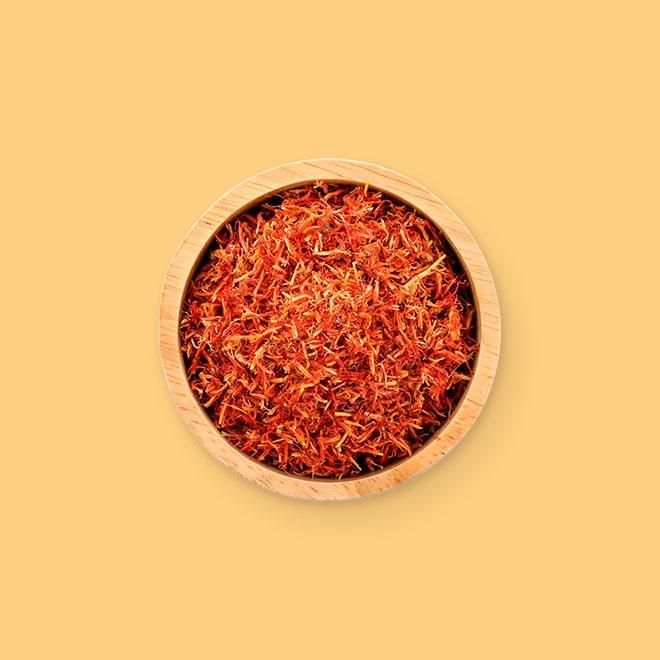Safflower




Safflower is an annual, herbaceous, thistle-like plant with many branches. Today, it is commercially cultivated for vegetable oil that is extracted from the seeds. Safflower is a highly sought after oil for its many health benefits and cooking capabilities.
Safflower is one of humanity's oldest crops. It has been discovered in many locations, but it is primarily native to Europe, Africa, and India. In fact, the earliest discovery of safflower dates back to the 1300 BC in Egypt, where it was buried with the remains of King Tutankhamun, more commonly known as King Tut. Aside from Egypt, safflower was commonly mentioned in Greek manuscripts.
In India, safflower was a major crop, mainly used to make safflower oil that was used in paints and dyes. When safflower was introduced to the United States in the 1900s, it wasn’t viewed as potentially profitable until its production moved to the West. As of today, safflower oil is used for cooking at high temperatures, bases to certain dishes, and even medicine.
For safflower oil, store in a cool, dry location for at most a year. If oil starts to develop a strange odor, color, or taste, toss immediately.
Safflower oil can be used to treat painful menstrual cycles and fevers.
Safflower oil can be used as a stimulant, helping induce sweating and loosen phlegm.
Safflower oil is particularly good for deep frying because It contains more polyunsaturates than any other oil and has a high smoke point. Refined safflower oil is ranked second on the smoke point chart; it can reach a whopping 510°F before burning.
Safflower is high in omega-6 fatty acids, oleic acid, linoleic acid, and other polyunsaturated fatty acids.
Adding safflower oil to soups and other dishes will give a similar but lighter taste than adding saffron.
When deep frying, consider using safflower oil instead of other oils, as it’s flavorless quality doesn’t interfere with the taste of the fried product and is highly resistant to burning.
Using safflower oil in salad dressing is great as it won’t solidify or change colors when stored in the refrigerator, contrary to dressings made from olive oil.
Safflower oil is a high source of omega-6 fatty acids, which are great for reducing the chance of heart disease and regulating blood sugar level for those suffering from diabetes. This can also prevent people from developing diabetes.
Safflower oil is also known to help burn fat rather than storing it and also improves the immune system response.
Safflower oil is also rich in oleic acid, which is very beneficial for the scalp and hair. It can help improve hair health and skin health by stimulating regenerative processes in the cells.
Corrections or improvements? Email us at
content@sidechef.com